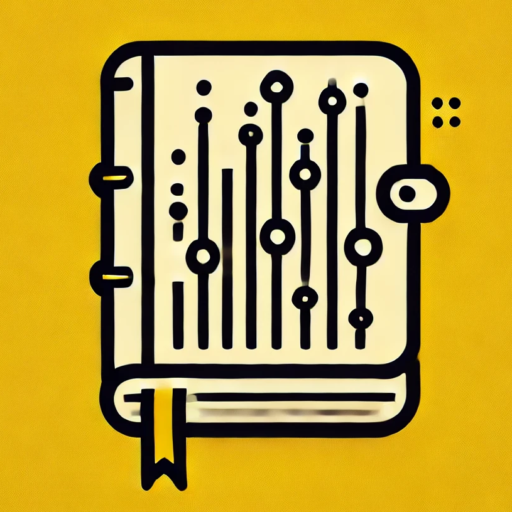1. Introduction
“The best tools don’t just make work easier; they redefine how you think about solving problems.”
When I first started working with multi-agent AI systems, I quickly realized that managing AI workflows manually was inefficient.
Sure, you could stitch everything together with LangChain scripts, but at some point, you need structure, orchestration, and a way to scale without drowning in complexity. That’s when I started exploring tools like LangFlow and CrewAI.
Both LangFlow and CrewAI promise to simplify AI workflow orchestration, but they take very different approaches.
One is visual-first, built for quick prototyping and modular design, while the other is code-driven, offering deep control over autonomous AI agents. If you’ve ever struggled with making AI agents work together seamlessly, you’re in the right place.
Why This Comparison Matters?
We’re at a point where AI systems are no longer just about calling an LLM API and getting a response. Businesses want fully autonomous AI agents—ones that can reason, interact, and execute tasks without human intervention. But building such systems is incredibly complex, requiring you to think beyond basic API chaining.
I’ve personally spent hours tweaking agent behaviors, debugging API calls, and testing different approaches. And let me tell you, picking the right tool early on can save you weeks—if not months—of work.
This guide is for developers, data scientists, and AI engineers who want to move beyond simple chatbot-like applications and build AI-powered workflows at scale. By the end, you’ll have a clear understanding of which tool fits your needs—whether you’re building a visual AI workflow or scripting an agent-based system.
2. What Problems Do LangFlow and CrewAI Solve?
“Before you choose the right tool, you need to understand the problem you’re solving.”
The Problem: Managing Multi-Agent AI Systems is Hard
If you’ve ever tried to build an AI-powered workflow, you know how quickly things get out of hand.
You start with a simple pipeline:
- User input → LLM processes → Output
But then, requirements change:
- You need multiple agents to collaborate.
- You want task delegation, memory, and reasoning.
- You need structured workflows that don’t break when scaling.
This is where things get messy. Writing custom LangChain scripts works for small projects, but once you need parallel execution, task dependency management, and agent collaboration, you either:
- Spend weeks writing custom orchestration logic, or
- Use a tool built for this.
That’s where LangFlow and CrewAI come in. They eliminate the need for custom orchestration, helping you build structured AI workflows effortlessly.
Traditional Approach vs Modern Solutions
In the early days of AI development, most workflows were monolithic.
You had a single script handling everything—prompting the model, processing responses, and making API calls.
But that approach doesn’t scale. If you’ve ever built a multi-agent system from scratch, you know that:


Today, AI workflow orchestration has evolved. Instead of writing everything from scratch, modern tools like LangFlow and CrewAI provide a structured approach, letting you:
- Visually design workflows (LangFlow) or
- Programmatically define agent behaviors (CrewAI).
Why Not Just Use LangChain Directly?
You might be wondering:
“LangFlow and CrewAI both use LangChain under the hood, so why not just write raw LangChain scripts?”
Here’s the deal: LangChain is powerful, but it doesn’t handle orchestration well out of the box.
- Want to manage multiple AI agents that work together? You need CrewAI.
- Need a visual tool to quickly iterate on AI workflows? LangFlow is your best bet.
- Prefer writing everything from scratch? Sure, you can stick
3. Feature-by-Feature Comparison Table
“Side-by-side, the differences become crystal clear.”
After working with both LangFlow and CrewAI, I’ve realized that choosing between them isn’t about one being better than the other—it’s about which one fits your specific needs. To make your decision easier, here’s a straight-to-the-point comparison of their core features.
| Feature | LangFlow | CrewAI |
|---|---|---|
| Primary Use Case | Visual workflow orchestration | Structured multi-agent AI coordination |
| Best For | Non-programmers, rapid prototyping | Developers building production AI systems |
| Customization | Limited scripting | Full control with Python scripting |
| Agent Management | Basic | Advanced |
| Scalability | Medium | High |
| Ease of Use | High (Drag-and-Drop UI) | Moderate (Requires Coding) |
| Integration | LangChain, OpenAI, APIs | LangChain, Custom APIs |
Breaking Down Key Differences

- You need a fast, no-code way to structure AI workflows.
- You’re working on a proof-of-concept and want something intuitive.
- You don’t need advanced agent behavior—just a structured pipeline.

- You need multi-agent AI collaboration with detailed task execution.
- You want fine-grained control over how AI agents interact.
- You’re building a production-grade AI system that requires scalability.
My Takeaway
I’ve personally used both, and the biggest mistake I see people make is choosing based on popularity rather than need. If you just want to experiment and iterate fast, LangFlow is a lifesaver. But if you’re serious about deploying an AI system with multiple interacting agents, CrewAI is worth the extra effort.
4. When to Choose LangFlow vs. CrewAI
“The right tool makes all the difference. Choose wrong, and you’ll spend more time fixing problems than building solutions.”
After working with both LangFlow and CrewAI, I’ve seen how each tool has its sweet spot. If you pick the wrong one for your use case, you’ll either hit a wall too soon or overcomplicate a simple workflow.
Let’s get straight to it—here’s when to use each.
Pick LangFlow If…

If you prefer drag-and-drop over writing code, LangFlow is your best bet. It lets you design AI pipelines visually, making it easier to experiment without diving deep into Python scripting.

I’ve personally used LangFlow when I needed to prototype an AI pipeline in minutes—not hours. If you’re working in a fast-paced environment where speed matters more than deep customization, LangFlow is a huge productivity booster.

Here’s where many people get it wrong: LangFlow is great for designing workflows, but it’s not built for highly autonomous AI agents that coordinate tasks on their own. If your AI doesn’t need reasoning, task delegation, or multi-agent collaboration, LangFlow is perfectly fine.
Pick CrewAI If…

When I first experimented with CrewAI, I quickly realized—it’s not just another LangChain wrapper. It’s built for autonomy. If your project requires multiple AI agents that work together dynamically, CrewAI gives you the control you need.

LangFlow is fantastic for prototyping, but when I tried scaling a multi-agent system with complex dependencies, it buckled under the load. CrewAI, on the other hand, thrives when managing multiple AI agents working simultaneously. If you’re building a system that needs to scale, handle complex logic, and run efficiently, CrewAI is the right call.

If you’re the type who likes fine-tuning every aspect of your AI agents—how they interact, when they trigger tasks, and how they make decisions—CrewAI lets you script it all. You’re not locked into predefined workflows, which means you can customize everything.
Final Thought: It’s Not Just About Features—It’s About Your Use Case
I’ve used both, and trust me, choosing between LangFlow and CrewAI isn’t about which tool is better. It’s about which tool is right for your project.
- Need something quick, visual, and easy? Go with LangFlow.
- Need autonomous AI agents that scale? CrewAI wins, hands down.
Your choice will dictate how much time you spend coding vs. managing workflows. Choose wisely.
5. Conclusion
“A tool is only as powerful as the problem it solves. Choose wisely, and you’ll accelerate your AI development—choose wrong, and you’ll find yourself rewriting workflows you didn’t need in the first place.”
After working with both LangFlow and CrewAI, I can confidently say they aren’t competing tools—they serve entirely different purposes. I’ve seen developers struggle when they pick the wrong one, only to realize weeks later that they should’ve gone in a different direction.
So here’s what I’d tell you if we were having this conversation over coffee:
- Need something fast, intuitive, and visual? Pick LangFlow. It’s perfect for building AI workflows without getting tangled in code.
- Building a system with AI agents that need to collaborate? CrewAI is your best bet—it gives you complete control over AI agent interactions and scalability.
- Not sure? Start with LangFlow. If you hit limitations, that’s a sign you might need to shift toward CrewAI for deeper control.
Your Next Steps
If you’re still debating between the two, try both. That’s what I did. The first time I built a multi-agent system, I assumed a simple workflow tool would be enough. Spoiler alert: it wasn’t. CrewAI was the missing piece.
But your use case might be different. So experiment, break things, and see what fits best for you.
What’s your experience with these tools? Drop a comment and let’s discuss!

I’m a Data Scientist.
